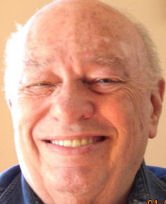On 9 February, various opposition groups in Iran sent a letter to the Ministry of Interior requesting permission to protest under the control of the Iranian police. Permission was refused by the relevant government officials. Despite these setbacks and crackdowns on activists and members of opposition parties, opposition leaders such as Mir Hossein Mousavi and Mehdi Karroubi, called for protests.
On Feb.14, a man displayed a poster of one of those killed during the 2009 election protests. Feb. 15 was publicized as "The Day of Rage". But, the day before the protests were due to begin, opposition leaders Mousavi and Karroubi were placed under house arrest and denied access to telephones and the Internet. Their homes were blockaded and they were not allowed visitors. On 14 February 2011, thousands of protesters began to gather in a solidarity rally with Egypt and Tunisia. There was a large number of police on the streets to keep an eye on the protesters, but thousands were still able to gather together in Tehran's Azadi Square. The number of protesters has been given by different sources, from "thousands" to "hundreds of thousands".
The solidarity protests turned into an anti-government demonstration during which the police fired tear gas and paintballs at protesters. To protect themselves, protesters responded by setting fires in garbage bins. Video footage showed one civilian being violently beaten by a group of protesters. Two protesters were fatally wounded in Tehran. Both were university students. According to reporter Farnaz Fassihi, they were both shot by men on motorcycles who their friends identified as Basij members.
Protests were also reported in the cities of Isfahan and Shiraz, which police forcibly dispersed, as well as in Rasht, Mashhad and Kermanshah.
The protests that occurred on this day marked a setback for the government of Iran, as the regime has campaigned that Mousavi's Green Movement had lost momentum, but the revived uprisings helps prove otherwise.
According to some reports, 1,500 Hezbollah fighters assisted in the suppression of the protests in Azadi Square. Following the initial protests, Hezbollah fighters allegedly continued to participate, assisting local forces in suppressing protests.
On 18 February, thousands of pro-government supporters called for the execution of opposition leaders after Friday prayers. Ayatollah Ahmad Jannati said that the opposition leaders had lost their reputation and are as good as "dead and executed." He said there should be more restrictions on Mousavi and Karroubi. "Their communications with people should be completely cut. They should not be able to receive or send messages. Their phone lines and Internet should be cut. They should be prisoners in their homes"
On February 19, the Interior Minister Mostafa Mohammad-Najjar stated that the protests set for Sunday, February 20, will "be confronted as per the law".
(Note: You can view every article as one long page if you sign up as an Advocate Member, or higher).





